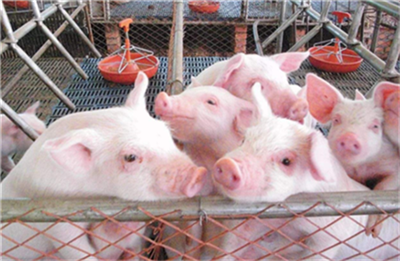Sharing of skills in the construction of pig barracks with low temperature in winter
Winter temperature is very low, most farmers in order to ensure the temperature inside the barn, have done a certain degree of cold protection measures, but do a good job of these measures at the same time often ignore several other management indicators inside the barn.
First of all, the most important thing is the temperature in the barn. Too low and too high temperature will affect the feed consumption and weight gain of pigs. The range of suitable temperature for pig breeding depends on many factors, such as pig breed, age, physiological stage, feeding conditions and so on. For example, the temperature of newborn piglets should be controlled at 32 ℃-35 ℃ within a week, and then decreased by 2 ℃ per week. The temperature in the nursery should be controlled at 22 ℃-27 ℃, the temperature in the fattening house should be kept at 17 ℃-20 ℃, and the temperature in the delivery room should not exceed 25 ℃.

The second is the humidity of the barracks, which weakens the disease resistance of pigs, which is conducive to the reproduction and growth of pathogenic microorganisms, and pigs are prone to scabies, eczema and respiratory diseases. When the relative humidity increased from 45% to 95%, the daily gain of pigs decreased by 6% and 8%. The fattening effect of pigs is the best when the temperature is 11 ℃ ~ 23 ℃ and the relative humidity is 50% ~ 80%.
The third is the harmful gas in the barn, the harm of the harmful gas in the barn is closely related to the digestion of the intestinal tract, we are often troubled by the peculiar smell and harmful gas in the pig house, especially in the case of airtight in winter. The harmful gases of piggery, including ammonia and hydrogen sulfide, not only smell bad, but also have strong irritation. It is highly corrosive to pig eyes and respiratory tract mucosa. According to netizens, the probability of respiratory diseases in pigs living in this environment has greatly increased, but due to the low temperature in winter, ventilation measures have been ignored by the majority of farmers, but we must do a good job of proper ventilation to ensure that the air is fresh and does not prick the nose so as not to stimulate the respiratory tract to induce respiratory tract inflammation and reduce pig resistance. Ventilation should be arranged when the pig feeding activity is most exuberant, and the exhaust fan should be switched on and off regularly.
The fourth is the captive breeding density, increasing the breeding density can make full use of the effective space and reduce the cost of raising pigs. Reducing the density and ensuring the space needed for the growth and development of pigs can reduce feed intake and reduce the addiction caused by the narrow space, such as defecation and urine everywhere, tail biting and other problems. Therefore, the feeding density should be controlled reasonably. The age difference of the same batch of weaned piglets should not exceed one week, and it would be better to have a litter and a column, so as not to reduce the transmission between piglets with different immune statuses. When feeding to about 20-25 kg, the floor density is 0.5 square meters per piglet, and the strip ground is 0.3 square meters per head. The fattening house should not be too large, 15-20 heads per column, according to the climate and enclosure conditions, the density should be 0.8 square meters for medium pigs and 0.8-1.2 square meters for big pigs.
- Prev

40 million pig farmers do not know how to "support good but evil", pig farm problems occur frequently, do you understand?
40 million pig farmers do not know how to "support good but evil", pig farm problems occur frequently, do you understand?
- Next

What is the main equipment of modern pig farm?
What is the main equipment of modern pig farm?
Related
- On the eggshell is a badge full of pride. British Poultry Egg Market and Consumer observation
- British study: 72% of Britons are willing to buy native eggs raised by insects
- Guidelines for friendly egg production revised the increase of space in chicken sheds can not be forced to change feathers and lay eggs.
- Risk of delay in customs clearance Australia suspends lobster exports to China
- Pig semen-the Vector of virus Transmission (4)
- Pig semen-the Vector of virus Transmission (3)
- Five common causes of difficult control of classical swine fever in clinic and their countermeasures
- Foot-and-mouth disease is the most effective way to prevent it!
- PED is the number one killer of piglets and has to be guarded against in autumn and winter.
- What is "yellow fat pig"? Have you ever heard the pig collector talk about "yellow fat pig"?

